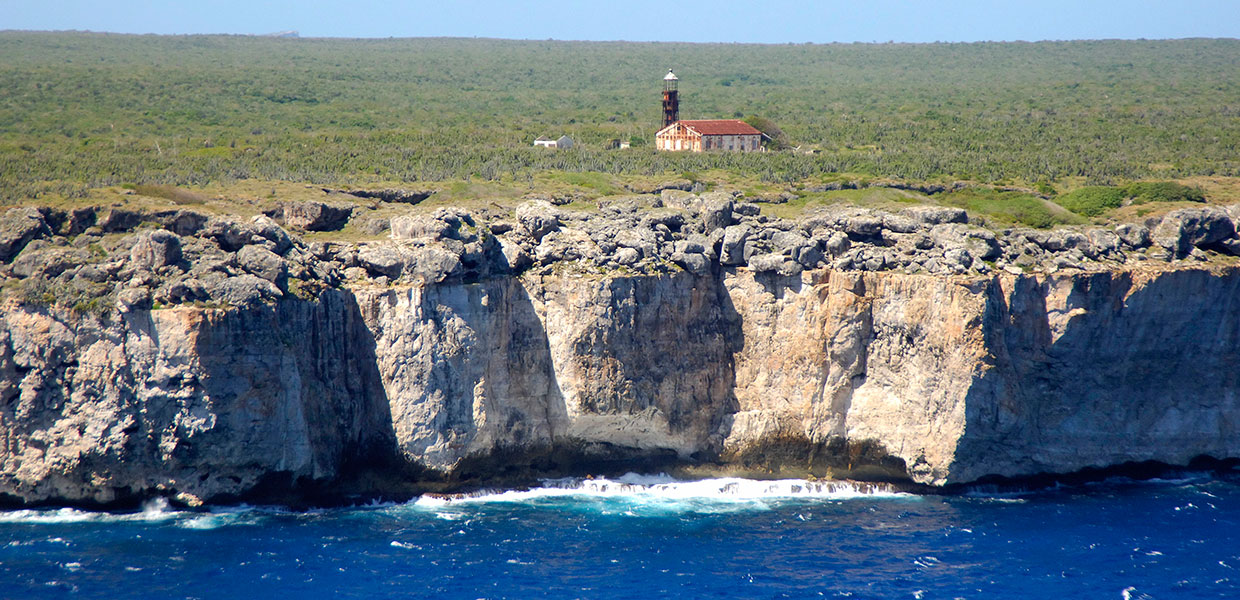
Mona Island, Puerto Rico
Amoná
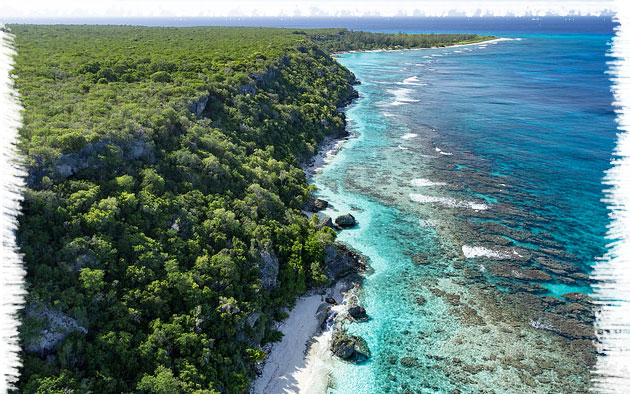
Mona Island is known as the island of “Amoná” and is located at a distance of 73.6 kilometers (45.7 miles) from the western coast of Puerto Rico. Mona Island is one of the places where we can find a almost infinite variety of wild life. This fauna goes from insects, reptiles, marine turtles, and birds.
Mona Island is not a vocational center nor a tourist center. It is an area of great ecological value that the Department of Natural Resources has made available to the public in general for passive recreation; limited or restricted. It is considered as a critical habitat for rare wild species or in danger of extinction such as the Iguana de Mona, el Culebrón de Mona (snake), Culebra de Puerto Rico (snake), Carey de Concha (marine turtle), Peje Blanco (marine turtle), Juey Morado (crab), Mariquita de Mona (bird), Boba Blanca (bird), Falcón Peregrino (falcon), Mariquita (bird) and Paloma Cabeciblanca (dove).
History:
Man’s activity began in Mona Island, at least a thousand years ago, with the arrival of the Araucan Indians, who came from the east, and settled in the Island’s caverns, where they left vestiges of their presence. They called the Island “Amoná”. They fed on fish, turtles, crustaceans, crabs, iguanas, small lizards, and birds. In addition, they possibly cultivated casabe and sweet potato in the coastal valleys and in parts of the plateau where the ground is deeper. They scrapped casabe and cooked it to make a sort of bread which they called “casabí”.
The little water obtained came from swallow wells and from pools naturally formed on rocks. Their dishes were made from clay found in the area. Wild cotton was used to weave clothing and hammocks. It seems that Mona became a port of call for the Arauacan Indians that traveled between Boriquén (Puerto Rico) and Quisqueya (Española or Santo Domingo).
On September 24,1494, the Arauacans of Mona saw for the first time a sail in the western horizon. The ship, that came from Quisqueya, anchored finally in Mona, disembarking several Spaniards. Its captain was Christopher Columbus. They remained with the Arauacans several days, supplying themselves with water and casabe before leaving to the east. However, the ship returned before disappearing over the horizon, because the captain had become ill, shortly after the ship departed to Santo Domingo. The Spaniards did not return to Mona in many years, but soon the Indians received bad news from Santo Domingo. The Spaniards had enslaved many of their brothers, the Jigüeyanos, forcing them to extract gold from the earth. The Indians soon rebelled and made frequent raids in the Spanish colonies. Some Indians of Mona in search of sea turtles went to Santo Domingo and helped in the fight against the Spaniards. Others, that had escaped slavery in Santo Domingo took refuge in Mona.
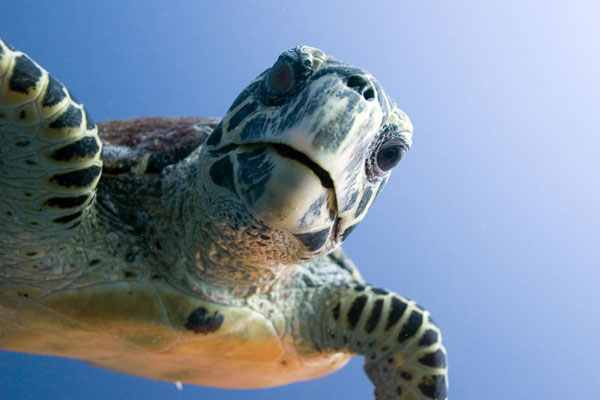
In 1508, another sail appeared in the horizon to the west of the island. It was Don Juan Ponce de León’s ship, with fifty men, who had been sent from Salvaleón del Jigüey, in Santo Domingo, to colonize San Juan Bautista (Puerto Rico). The ship remained during several days in Mona, supplying itself of great amounts of casabí. In that same year, one ship, under the control of Juan XII Calderón, lieutenant of Juan Ponce de León, came to Mona from San Juan in search of more casabí and sweet potato. Ponce de León, found in the island such a valuable food source for his new colony that, instead of taking the Indians as slaves to San Juan, he left them in Mona so that they cultivated the soil. The Indians also made hammocks and shirts for the colony. The island became a port of call for the ships that sailed between San Juan and Santo Domingo.
On June 16, 1511, a Royal Decree of Fernando V, put the government of Mona under Diego Colón, Governor of Santo Domingo. Diego in turn transferred it to his uncle Bartholomew, Christopher Columbus’ brother, and gave him the Indians in quality of slaves so that they could cultivate food there. That same year, a hurricane destroyed the plantations of Mona and killed many Indians. When Bartholomew died in 1514, the island returned to hands of the Spanish Crown. In 1520, it was granted to Francisco de Barrionuevo, who for more than ten years produced food for Puerto Rico with the work of enslaved Indians. Among other products, excellent oranges were harvested. Perhaps during this period, sesame seeds and maguey were introduced in Mona.
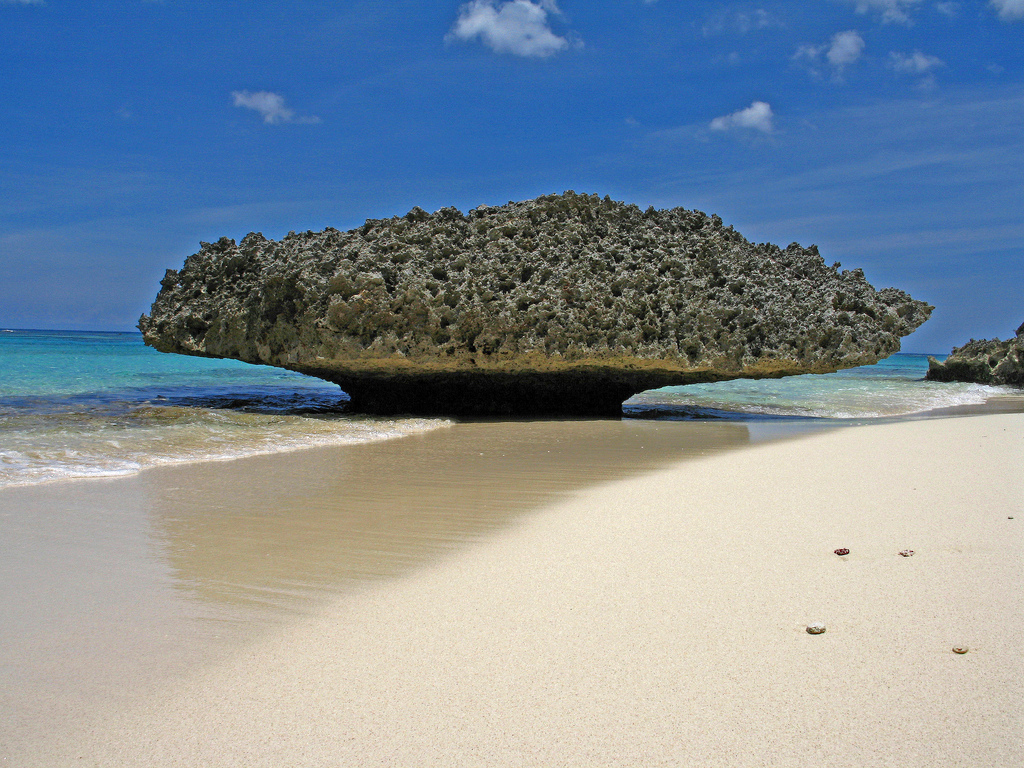
The exhaustion of gold, soon caused a reduction in the mining activity and the population of Puerto Rico, and reduced the demand of food from Mona. Consequently, the indigenous population of this Island diminished. Almost deserted in 1534, it was used by the refugees who fled from Puerto Rico as a meeting place after the discovery of gold mines in Peru. King Carlos I rejected a proposal from Puerto Rico for the fortification and the defense of the Island.
Left defenseless, Mona fell into the hands of pirates who, finding in the Island an ideal site for the repairing, supplying and water for their ships, maintained it under their dominion for almost three centuries. The French privateers who sacked and burned San Germán, Puerto Rico, in 1528, took refuge in Mona with their two ships and took two Spaniards prisoners, who were in charge of the Indians. After hoping for eight days the arrival of Spanish ships to release them, the French left.
In 1541, a French ship from Saint John, with a crew of 35 men attacked one ship and sank another one near Mona. The buccaneers disembarked, sacked the Island and captured four Indians. Two years after they had sacked the coasts of Guayama, San Germán and Red Cabo, they were attacked in the Mona Passage by Spanish ships returning from Santo Domingo. The flagship of the pirates was captured and the Spaniards hung about forty men. However, the French pirates retained the domain of Mona until 1576, and attacked San Germán, at least, in two more occasions.
The pirates in Mona made the Indians life impossible, and towards 1561, these had almost disappeared. Therefore in 1590, Sir Walter Raleigh, who had left five months ago from England in route to North America with three ships and 105 men, stopped in Mona for water. They killed two wild pigs and one iguana. One of the members of the expedition died there.
John White, an Englishman, armed, in course, arrived at Mona the 13 of March of that same year. He found there ten or twelve houses which he burned down, the occupants had fled to the caves to take refuge. On April 11, 1591 Christopher Newport, another English sailor, disembarked in Mona and found 19 people who lived cultivating tubercles and young pigs.
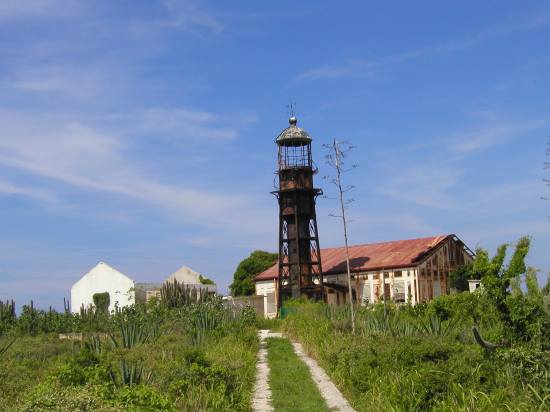
In 1593 the Exchange, one of Sir Francis Drake and Sir John Hawkins’ ships, was lost during bad weather in the Mona Passage, the mainmast, the bowsprit and the pawl were broken by the fury of the wind. The crew was saved miraculously. In November of that same year Sir James Lancaster arrived at Mona in the Edward Bonaventura. He found living in the Island an old Indian with his three children. While Sir James was on land with 19 members of his crew, a squall broke the mooring cables of the ship, resulting in the lost of the ship and five men and a boy that were aboard. The sailors who had remained inland were rescued 29 days later by a French ship.
During the 17 and 18 centuries, the goats and the pigs that had become possibly wild, seemed to be the only survivors of the previous colonization.
In 1699, the famous Captain William Kidd, was lost for some time in Mona, after an incursion in which he sacked ships in waters of Puerto Rico. In 1804 the French pirates of Haiti armed a frigate and four small sailboats, hid themselves in the environs of Mona and attacked English and Spanish ships. In a surprise attack shortly after by the authorities of Puerto Rico, Pirate Cofresí was on the verge of being taken prisoner. His ship was captured with four crewmembers, but he hid himself in a cavern and fled later to Santo Domingo in a small sailboat. The death of Almeida (the Portuguese) in El Morro, in agreement with official data, took place in 1832 before a firing squad, what seemed to indicate the end of the piracy in Mona. In 1858, there were signs of no inhabitants in the island.
Everything seems to indicate that there is no proof of hidden pirate treasures in Mona. Several skeletons buried in the Sardinera and Pájaro Beach, are said to be European and not Indian, most likely pirate victims. In 1874, the Governor of Puerto Rico sent a party to search for pirate treasures, but they give up after ten days when one of the workers committed suicide.
The dissolution of calcium and perhaps also, bat excrements that had been accumulated, left a deposit in the ground of the caverns whose thickness varies from some inches to several feet. It contains between 3 to 25% of phosphate and is a good fertilizer. Perhaps it was used for cultivating in the island during 16 century. The abundance as much as the value was already well known in 1790. After 1850, when the pirate threat had disappeared, the embarkment of phosphate of the island began, first in little amounts and small ships. In 1858 an official study was done of the deposits, shipping 30 tons to Cadiz and London to analyze.
The first concession for the exclusive operation of phosphate from Mona Island was done by the Government of Puerto Rico which seems to have been granted to Manuel Homedes and Cabrera in 1874. Two years later this franchise was transferred to Miguel Porrata Doria, from Fajardo and Juan Contreras, Madrid. The society Porrata Doria, of Fajardo and Juan Contreras of Madrid, carried out the first organized extraction. Between 1877, thirty two ships sailed with 7,830 metric tons of Mona phosphate to diverse parts of the world; England, France and the United States.
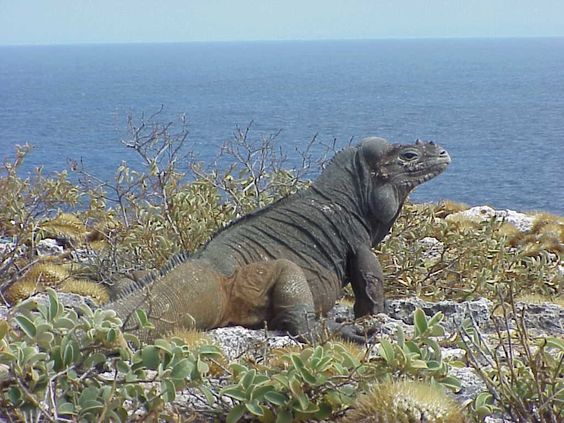
There was a time during 1883 in which 40 tons were removed daily from Pájaro Beach, task that was made by 76 workers brought from Guadalupe. The phosphate was extracted from the following caves: Mayagüez, Caigo o No Caigo, Los Ingleses, Escrita, Agua, Lirio, Puente Alemana, Capitán, Canadá, Pájaro and Este. In 1887, a civil employee from the Government of Puerto Rico based himself in Mona, what seemed to be the inspection of the progress of the mines. Nevertheless, this activity decayed soon. By 1888 there was no permanent colony in the island, even though the fishermen used it on and off.
In 1881, John C. Miller, an English engineer of St. John formulated detailed plans for the operation in great scale of the deposits of Mona. Nevertheless, there is no proof of the inscription of a franchise. Four years later, while he traveled in a small ship from Mona to Mayagüez, he was lost at sea.
The period of greater mining activity began in 1890, when a concession to Anton Mobins was subleased, a German, who settled a colony of about two hundred miners there. It was then when roads were constructed, and all the caves of the island were operated, except for most remote in the northern area. During this period, the Mona phosphates were embarked to France, Norway, England, Denmark and Germany. No less than fifty ships were loaded of this product between 1890 and 1892. In 1894, twelve ships took 4,500 metric tons.
The operation of the German company nevertheless, was suspended suddenly in 1896 because the competition of phosphate deposits in Peru, Curazao and Florida destroyed the market in the United States and to the loss of the demand in Germany thanks to the discovery of cheaper substitutes. The total amount that was extracted did not surpass 50,000 tons. Towards 1898, the population of the island had been reduced to 6 people.
The land of Mona produced part of the miners food. In 1887 a small extension was cultivated, but the first official concession for these purposes during the period was by the Royal Decree of August 9, 1888, that granted the coastal valley between Cabo Julia and Cabo Caigo o No Caigo (from Sardinera to Uvero beach) from the cliffs down to the sea, to Carlos Miguel Iglesias y Mons.
The franchise demanded Iglesias to clear the trees and improved the grasslands. Iglesias cleaned nearly 200 acres, some of which he said were covered by virgin forests. He sold coal to the miners, constructed a cistern to obtain water. His venture, that included an investment of 10,000 pesos, concluded in 1898, and the franchise was taken away from him in 1904. It was probably during this time that Iglesias introduced in Mona the coconut palm tree, Guinean grass and malojillo.
In 1885, the construction of the Mona lighthouse began officially. Finally in 1898, the foundation for this work was constructed on the plateau that dominates Pájaro Beach. In this point, nevertheless, a lighthouse was never known because the visibility wasn’t enough from the north. In 1903, a lighthouse was erected further north (in its present location), near Cabo del Este, and 244 acres were granted for its service.
At the beginning of XX century, a third period of the organized extraction of phosphate began. Explorations done in 1901 indicated that there were 460,000 tons left in 22 of the caves. A mining franchise granted to Percy Saint began to work with part of the equipment left by the German company. The production was less than the one before, and diminish even more after World War I. In 1924, when the franchise expired, the most of the accessible deposits had been operated. Nevertheless the records of the paid exemptions indicate that during this period they were not more than 36,000 tons exported. In 1924, there were only six families (46 people) in the Island.
After the time of Iglesias only one small extension has been cultivated. A family with the last name of Rodriguez (Doña Geña), moved to Mona in 1910 and lived in the caves until 1943. They sustained themselves with agricultural products, hunting and fishing. During several years they were the only inhabitants of the island. The harvests obtained in recent years include maize, pumpkin, watermelon, pigeon peas, kidney beans, onions, sweet potatoes, peanut, tobacco, cotton, sugarcane, coconuts and papaya. Also cattle was raised. Evidently it was during this time that the remaining coastal forests were destroyed, perhaps providing the miners with firewood.
After World War I the smugglers used Mona as a hiding place. In 1923 liquor, perfume and drug contraband was found in the caves with a value of more than 75,000 dollars. It is said that this contraband came from the French islands of Martinique and San Martin to be sold in Puerto Rico.
Mona Island became a Forest Reserve of the Government of Puerto Rico in 1919. For that date the best forests and most accessible had been destroyed in order to clear the ground for cultivation or coal, and hundreds of tons of guayacán wood had been exported. By means of a permission issued in 1929, 2,500 acres were partially cleared in the southern plateau. From 1930 to 1937, nearly a thousand acres of trees were cut for posts and coal.
After 1941 the island has been used during brief periods for youth camps. It is said that in 1942, a military detachment of the United States in the southern coast was cannoned by a German submarine.
Location:
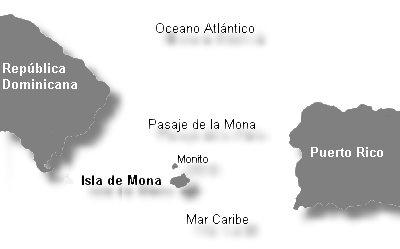 Mona is located at a distance of 73.6 kilometers (45.7 miles) from the western coast of Puerto Rico.
Mona is located at a distance of 73.6 kilometers (45.7 miles) from the western coast of Puerto Rico.
Surface:
10.9 sq km / 6.7 sq mi
Population:
It is not very populated, with a nucleus inhabited in Pájaro Beach by personnel of the Department of Natural Resources and tourists and hunters who only reside a few days. The Island is an area of wild life under the protection of the Department of Natural Resources of Puerto Rico in collaboration with the Department of the Interior of the United States of America.
Topography:
Its topography is mainly flat, forming a plateau. Three fourth parts of its coasts are formed by cliffs that reach 50 meters of height.
Hydrography:
The water is scarce. There is no potable water available.
Economy:
Tourism is an important economic resource of the island, attracted by the natural beauty of the Island and its beaches.
Climate:
Classified dry, as a semi-arid region or subtropical drought area. The temperature average is of approximately 79°F (26.1°C).
Fauna:
Mona Island is one of the places where we can find a almost infinite variety of wild life. This fauna goes from insects, reptiles, marine turtles, and birds. One of its more surprising and oldest inhabitants is the Great Iguana de Mona (Cyclura stejnegeri). This organism belongs to the herpetological fauna (reptiles and amphibians) endemic of the Island. This species is protected by law due to its state, classified as “Vulnerable” because of the number of individuals that exist and to the problems that this organism faces.
The Iguana is not the only inhabitant of Mona Island. In addition to the pigs, the goats introduced by the Spaniards and the misled domestic cats, we can observe a varied and diverse fauna. It has 16 species of terrestrial snails of which 4 species are endemic and no longer exists in mainland Puerto Rico. There are 52 species of spiders, three species of scorpions and four centipedes. The black widow (spider), two scorpions and a centipede that are poisonous. These organisms abound in the coastal valley.
In addition we can find 500 species of insects, more by surface unit that in Puerto Rico. Of these, 67 (15%) are not known in Puerto Rico and 24 (5%) are only found in Mona Island.
Out of the amphibians, Mona counts only with the coquí. Not found in any other part of the world, its song is different from the one found in Puerto Rico. There are three species of serpents known in Mona. The boa is the one of greater size. Most common is the black snake that abounds in the plateau. None of these serpents are poisonous. The native mammals of Mona Island are two species of bats. It is presumed that in the past its population was greater than the present due to the great amounts of guano which gave origin to a productive industry. One of the two species is feeds on fish.
Due to the Island’s almost perfect natural state, it allows abundant marine life to developed in its coastal waters. There have been identified more than 270 species of fish between Mona Island and Monito
